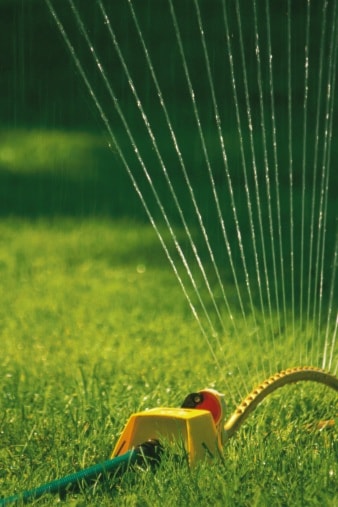Water restrictions remains status quo throughout the region even after the province issued a Level 3 drought rating last week.
The Ministry of Forests, Lands and Natural Resource Operations warns that the Lower Columbia could experience significant water supply shortages this year especially with more warm and dry conditions forecast this month. The West and East Kootenay areas also remain on alert as drought conditions continue to negatively impact stream flows, river levels and ecosystems.
The stepped up measures call for voluntary water-use reductions of an additional 20 per cent beyond restrictions that have been in place locally since June 1.
Even though the Columbia River appears to be at its usual August depth, rules for Trail water users could change later this week.
“To date we have not experienced anything outside the norm from our two water sources,” explained Chris McIsaac, Trail’s utilities superintendent. “Keep in mind that our surface water source is the Columbia River, so it is difficult for us to see any anomalies with the river other than a visual change in water level.”
The Bear Creek well, which taps into the Bear Creek Aquifer, has not experienced any decrease in water level, McIsaac added. “Regardless, we are still proceeding with a review of our municipal irrigation habits in an attempt to achieve a 20 per cent reduction as the ministry is recommending.”
He said the water report with recommendations should be complete mid-week.
Another municipality that pulls from the Columbia River is Warfield. Standard water restrictions remain in effect for now, as well as in Rossland, with the latter reporting full reservoirs sourced from various streams.
Montrose’s year round restrictions were tested when an atypically dry start to summer had water users pulling more than 28 million litres from the municipal supply. That’s one of the highest use periods in village history, totalling four million litres more than June the year previous.
The same is expected for July and August, says CAO Bryan Teasdale, noting an increase in usage also hikes up associated costs.
He said no significant changes have been identified in the two production wells that supply groundwater from an aquifer near Beaver Creek, but users are urged to reduce water consumption for reasons outside of conservation.
“We have experienced an increase in usage,” Teasdale pointed out. “And, as such, our operating costs for our water supply and distribution activities have seen increases,” he explained mentioning electrical, general operation and maintenance expenses.
Lawn and garden sprinkling is permitted between 6 a.m. and 8 a.m. and 6 p.m. and 8 p.m. on designated days and flow restriction devices are required on hoses, nozzles and spray guns.
For a complete list of water regulations, visit the Montrose Facebook page.
Since the Village of Fruitvale tightened watering regulations, demand has stabilized, says CAO Lila Cresswell, noting an increase in restrictions may still happen if the weather remains dry.
The municipality recently switched most operations from Kelly Creek surface water to ground water from two production wells, one at Maple Avenue, the other on Columbia Gardens Road.
“People have been very diligent about staying within the regulations,” said Cresswell. “Our usage has declined to a manageable level, so we have remained at Level 2.”
Intake continues to be monitored, she added. “If things change for the worse, we will move to Level 3.”
Fruitvale residents are allowed one sprinkler per house, turned on between 8 a.m. to 9 a.m. and 8 p.m. to 9 p.m. on designated days.
Underground sprinklers are permitted to run between 2 a.m. and 4 a.m. in 20-minute intervals per zone.
Further east in Salmo, the village’s two groundwater wells, which pull water for storage in a reservoir tank, show satisfactory and normal levels at this time, says CAO Diane Kalen-Sukra.
“While we do not regularly measure water table levels, the village would have cause for concern if we learned that residents in the area, who have their own private wells with pumps closer to the surface, were experiencing their wells short of water or drying up,” she said. “We have heard no such complaints or concerns.”
Kalen-Sukra said water restrictions are not in place this year, which is typical for the village.
“However, as part of our water infrastructure planning, we have a water engineer scheduled to look at our system later this week,” she added.
Although residential, agricultural and industrial users within municipalities and regional districts are backed by reservoir storage and less vulnerable to shortages, the province reminds all users that conservation also protects smaller water systems from streams, lakes and wells.
